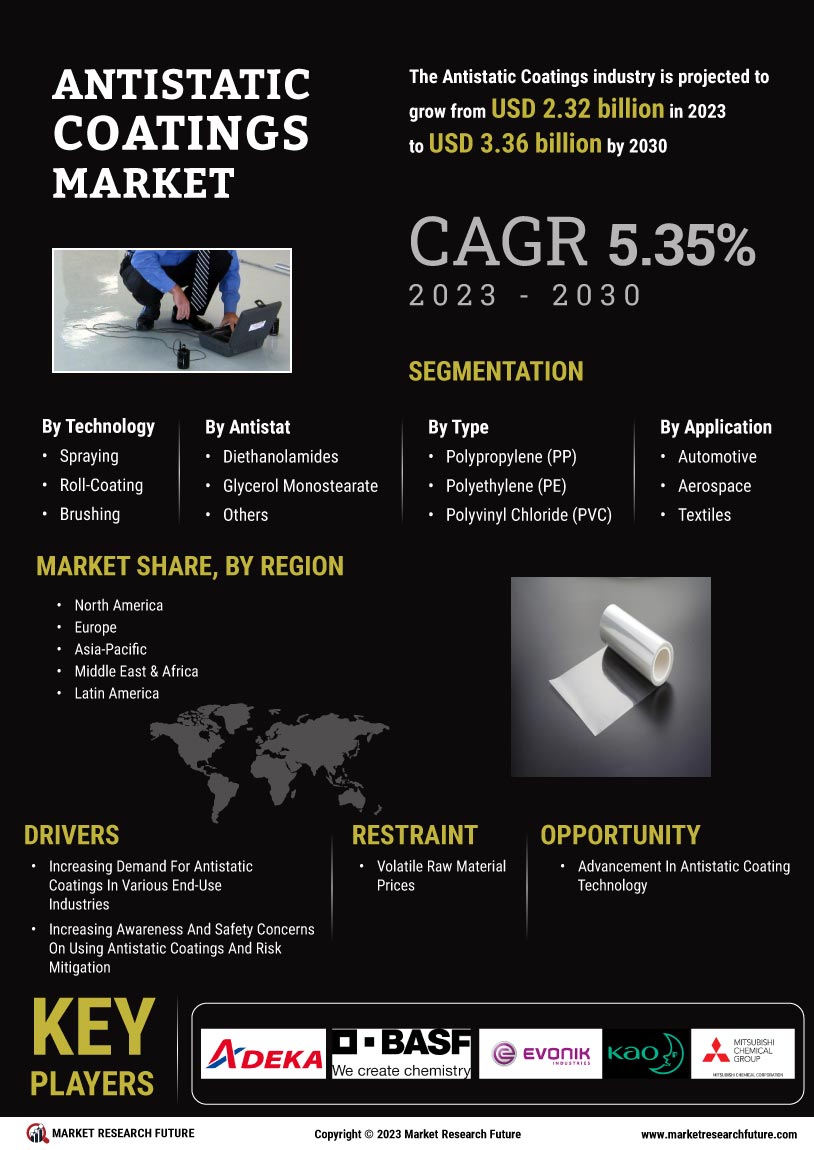The Antistatic Coatings Market is distinguished by the presence of numerous global, regional, and local players catering to the antistatic coatings techniques that are evolving at a rapid pace. Furthermore, the expansion in the electronic industry is further driving the growth of Antistatic Coatings Market during the forecast period. The major players have adopted a strategy of obtaining regulatory approval from government agencies for their products and signing contracts and agreements to broaden their reach and reduce operational costs.
The Antistatic Coatings Market is extremely competitive, with players competing, partnering, and investing heavily in research and development to gain a significant market share. The market is moderately fragmented with rising competition, increasing collaborative partnerships, and other strategic decisions to achieve operational efficiency.
Mergers and collaborations were also observed to expand the company's product portfolio, as well as introduce new software and services. The growth of prominent industry players is dependent on various factors, such as market conditions, government support, and industry development. Key manufacturers in the antistatic coatings market are focusing on developing products with advanced technologies. It is also projected that a rise in the investments for R&D will also boost the market's growth in the upcoming future.
The global Antistatic Coatings industry is highly fragmented. The key players operating in the Antistatic Coatings Market include ADEKA CORPORATION (Japan), BASF SE (Germany), Evonik Industries AG (Germany), Kao Corporation (Japan), Mitsubishi Chemical Corporation (Japan), Nouryon (The Netherlands), Palsgaard (Denmark), Nicca Chemical Co., Ltd (Japan), Arkema S.A. (France), Clariant AG (Switzerland), Croda International Plc (UK) and many more.
ADEKA Corporation: ADEKA Corporation is a manufacturer and distributor of chemicals and food products. The company offers resin products, insulators, and processed fat/oil products. Its operations are carried out through the following segments: Chemical Products, Food Products, Life Science, and Others. The Chemical products division manufactures propylene glycol, hydrogen peroxide, polyolefin additives, polyvinyl chloride stabilizers, plasticizers, flame retardants, epoxy resin, surfactants, lubricating oil additives, electronic circuit board etching equipment, and semiconductor materials. Margarine, shortenings, and sauces are all part of the food products category. In addition, the Life Science area includes pharmaceuticals, quasi-drugs, veterinary drugs, wood chemicals, and medicinal supplies.
Furthermore, the others segment consists of real estate firms, logistics services, and construction administration. It operates sales offices, manufacturing facilities, and R&D facilities in Japan's Nagoya, Sapporo, Sendai, Fukuoka, and Osaka areas. The company operates in a number of locations throughout Asia, North and South America, and Europe.
Croda International plc: Croda International plc (Croda) is a manufacturer and supplier of a diverse range of chemicals and chemical products, including oleo chemicals and industrial chemicals. It provides active ingredients and cosmetic oils that are used in coatings & polymers, crop care, geo technologies, health care, home care, industrial chemicals, lubricants, personal care, and polymer additives. It offers products to a number of industries, including those that deal with industrial chemicals, personal care products, life sciences, and consumer products. The company sells its products in over 37 countries across the world.
Moreover, the company has operations in Asia Pacific Europe and EEMEA (Europe, Middle East, Africa) Latin America North America.


















Leave a Comment